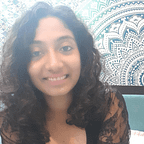A week in the capital: Berlin
A trip to Berlin is no less than taking a journey back in time. Especially when you stay at the Checkpoint that has a bloody history of people dying trying to cross the border. The above picture is that place where on one side was US and the other side was Soviet Union part. If you zoom into the KFC part in the picture, you can see a white board that says “You are leaving the American Sector”. It implied you are entering the East Berlin which was under Soviet Union from 1945 to 1990. I enjoyed my time in Berlin not only because of its vibrant nature, nightlife, food and multi-culture but also because the streets and museums taught me so much. There are so many World War related museums that has free admission, I will write about those that I visited and I definitely recommend them.
Let’s begin our journey in Berlin through my eyes. We arrived in Berlin in the morning and headed straight to the Checkpoint Charlie where our stay was reserved. Some walls at the Checkpoint has a lot of information about the events that occurred after 1945, don’t miss that during your visit. We also witnessed street side vendors selling Russian hats and other related things. There was a wall poster that read “If you were here 30 years ago, you would be shot” depicting the horror of Cold War times. All these felt like a whole new part of Germany and we headed to Jewish Museum which was nearby.
We all know about the Nazi party and the holocaust times during WW2, the Jewish museum was a reminder about how Jews were treated during that time. The architecture of the museum was not regular, it was tilted and the floors were inclined. The shape of the building was like a broken star of David and the halls had lot of empty spaces. It has 3 parts: Axis of Exile, Axis of Continuity, Axis of Holocaust. In 1933, when Nazi rose to power, many Jews migrated to different parts of Europe. Some were put in the refugee camp and the Axis of Exile shows their journey and how it feels to run away from your own home under threat. The museum has not only facts stored but it is built in such a way that it makes you feel about the victims to some extent. Axis of Holocaust was about Anti-Jewish program that started in 1938 that openly started discriminating Jews. One entire floor is dedicated to a writer Curt Bloch who was in hiding during WW2. You can easily spend 3 hours in the museum learning about the dark times. We also learned about few facts about Judaism religion.
It was almost evening when we came out of the museum and we headed to see the nightlife of Berlin. When it comes to food and drinks, pick any in Berlin, I am sure it will not disappoint you. I have tried many cafes, restaurants and pubs in a week stay and I was in awe every time. The food diversity, taste, diverse options that Berlin has was just very impressive. The connectivity of the city through metros and trams are also very reliable. The vendors speak in English and in many places there was pay by card option and overall we felt we are not in Germany. Berlin is really big and I can only speak for those areas that I have been. They are near TU Berlin, areas around Checkpoint, Brandenburg Gate, and basically the tourist spots. When we went to Kreuzberg, it was quite different. There were shops with only cash payment and also the ambience was okayish.
Next, I will take you to Nazi’s main office. That is Topography of Terror which is now a Nazi documentation center. The admission is free obviously. It has different chapters and shows how the Nazi party started expanding their occupation. Beginning from the Poland occupation, the killings, the end of war and the post war was depicted in detail. It also has outside exhibition of the period from 1933 to 1945. This has newspaper articles, pictures, documents to display the facts accurately. It showed how Hitler took an advantage of the then failing Weimar Republic and was a hope to people.
Then we went to Brandenburg Gate, the area around is well protected and picture perfect. The gate was an emblem of German reunification and the Berlin wall was built in 1961 through this intentionally to divide Berlin. The Berlin city is located by the River Spree. The river side areas are usually pretty to take a picture. The other areas we visited are Fernsehturm (TV tower), Reichstag building which is a parliamentary building. Admission is free but should be booked ahead. The other notable spot was Bebelplatz where 20,000 books were burnt in 1933 claiming them ungermans. German Jewish poet Heinrich Heine wrote a quote here: “that was but a prelude, where they burn books, they will ultimately burn people as well”. And that’s what happened later in the history. We also visited German Historical Museum with a very nominal admission fee. The museum was interesting mainly because it told the history along with answering what if? questions. What ifs are really interesting because they show that the world would be very different even if a single event in the past had turned out differently.
On the last day, we just chilled around in Einstein Kaffee, a coffee shop chain in Berlin and left to Prague. This is going to be my first visit in Eastern Europe and I am very excited about this part. Let’s meet in Prague in the next blog.
